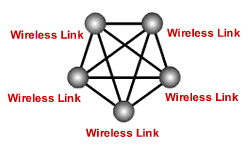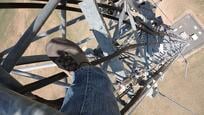The way the world's employees work is forever changed. The Covid-19 Coronavirus has shocked the world and is making us all look at how we do things and how we work. Our culture used to be to a work environment that people would go and congregate in common offices and work spaces. Overnight we have seen the hyper growth of the work from home way of doing business. The concept of a remote workforce has been around for a long time and many companies have taken advantage of all the benefits of a virtual workforce. There are obvious jobs that require for people to come to a physical location to work together but there are a lot of job functions that can be done remotely and outside of crowded office spaces. Great technology makes it possible but one thing a virtual workforce requires more than ever is greater bandwidth.
High bandwidth wireless infrastructure is the key to the virtual workforce. With just the sheer magnitude of people working remotely our nations critical data networks are being tested. Organizations are now finding out that they need bigger internet gateways but they also ned to increase their wide area ("WAN") and local area ("LAN") networks. A GigE network yesterday is just not enough for the primary backhaul. The new standard is 10Gig and beyond. This is why wireless communications is designated as critical infrastructure and the workers that build and maintain wireless networks are designated as "Essential Workers."

5G LTE, licensed microwave backhaul, last mile wireless, SCADA telemetry, or in-building DAS (distributed antennas systems) all are critical to support virtual workers and a mobile workforce. As everyone is dong their part to help stop the virus and keep each other safe there is a lot of confusion on who should be out working. Wireless communication sector has been deemed by the Federal and all State Governments as critical infrastructure and the wireless industry's "essential workers" are out doing their part to keep the world communicating and working.
In most all cases wireless technicians and tower climbers never come in contact client personnel or other individual providing a safe workplace for essential works that are in guidelines of all State and Federal requirements. Most of the time the wireless workforce are outside on towers and roof tops building out new infrastructure or maintaining existing wireless networks.
How AO Wireless can help with the virtual workforce:
- Up to 10Gig Full Duplex Networks - With remote workforce comes the need for higher bandwidth. From 1GigE to 10Gig FD there are wireless solutions to increase bandwidth.
- Cloud Based WNMS (wireless network monitoring) - AO Wireless provides an NMS system focused on wireless devices where we monitor and support wireless networks. We provide our clients a cloud based portal so they can remotely manage their networks along side our great support teams.
- Annual Support and Maintenance Programs - We have a 3 tier support program that provides annual maintenance and on-call / on-site support to keep you up and running.
- Leased Networks - We can deploy within days a leased wireless network to provide bandwidth right away.
- Staff Support - We can provide remote and on-site support while our client personnel are working from home.
- Emergency Response - If you have issues give us a call!
Stay Safe and Healthy Everyone!





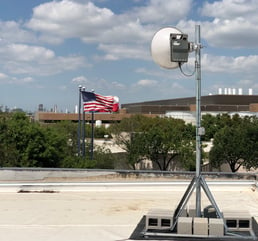

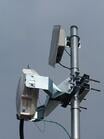 Do you ever experience downtime on you network due to outages with your telecommunications provider, such as: AT&T, Verizon, or Comcast? What does a network outage cost you organization in dollars and man hours due to lack of productivity and internal communication or with clients? What do you say? This never happens? Think again!
Do you ever experience downtime on you network due to outages with your telecommunications provider, such as: AT&T, Verizon, or Comcast? What does a network outage cost you organization in dollars and man hours due to lack of productivity and internal communication or with clients? What do you say? This never happens? Think again!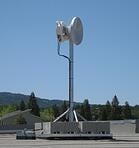 Wireless backhaul connectivity, both
Wireless backhaul connectivity, both 
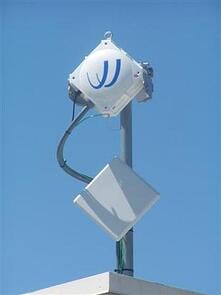 Licensed microwave wireless radio systems are typically built and designed for long term solutions. Point to point licensed microwave links are true fiber replacement systems and offer full duplex wireless communications for both Ethernet and TDM. The licensed wireless bridge hardware is designed to provide carrier grade performance (high bandwidth and low latency). Because a microwave link is licensed and is not to inject and interference on other licensed microwave backhaul operators in the area they must have LOS (line of sight) and not cause heavy multipath. This is a common question of why licensed microwave radios don't use OFDM or MIMO and why they can't be used in NLOS (non line of sight) applications. In a NLOS wireless link application unlicensed wireless backhaul radios that use OFDM or MIMO take advantage of multipath for their connectivity.
Licensed microwave wireless radio systems are typically built and designed for long term solutions. Point to point licensed microwave links are true fiber replacement systems and offer full duplex wireless communications for both Ethernet and TDM. The licensed wireless bridge hardware is designed to provide carrier grade performance (high bandwidth and low latency). Because a microwave link is licensed and is not to inject and interference on other licensed microwave backhaul operators in the area they must have LOS (line of sight) and not cause heavy multipath. This is a common question of why licensed microwave radios don't use OFDM or MIMO and why they can't be used in NLOS (non line of sight) applications. In a NLOS wireless link application unlicensed wireless backhaul radios that use OFDM or MIMO take advantage of multipath for their connectivity.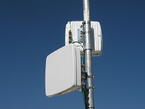 A
A 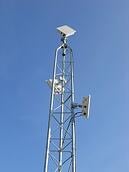
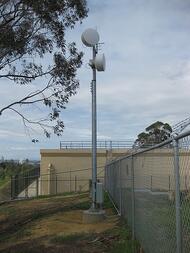 As the USA spends millions lobbying for a fiber build out and billions more slowly deploying a fiber backhaul infrastructure the rest of the world is leap frogging us by skipping over a fiber infrastructure by rapidly deploying wireless backhaul using microwave communications and technologies like
As the USA spends millions lobbying for a fiber build out and billions more slowly deploying a fiber backhaul infrastructure the rest of the world is leap frogging us by skipping over a fiber infrastructure by rapidly deploying wireless backhaul using microwave communications and technologies like 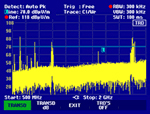
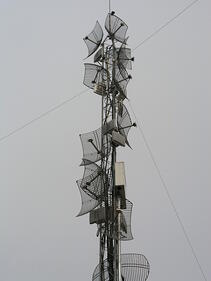 As more and more people get tempted with the thought of 100Mbps, up to 300Mbps providing an extremely fast ROI compared to a leased telco line, more and more unlicensed wireless backhaul will be deployed. The one thing that that people don't understand is that to get the full throughput the system must run at full modulation and channel width with limited wireless interference. This is something that the manufactures forget to mention. Because people are not controlling their RF signals by deploying so called plug and play outdoor wireless bridge systems and using wide beam antennas at full transmit power the amount of interference is going to explode.
As more and more people get tempted with the thought of 100Mbps, up to 300Mbps providing an extremely fast ROI compared to a leased telco line, more and more unlicensed wireless backhaul will be deployed. The one thing that that people don't understand is that to get the full throughput the system must run at full modulation and channel width with limited wireless interference. This is something that the manufactures forget to mention. Because people are not controlling their RF signals by deploying so called plug and play outdoor wireless bridge systems and using wide beam antennas at full transmit power the amount of interference is going to explode.